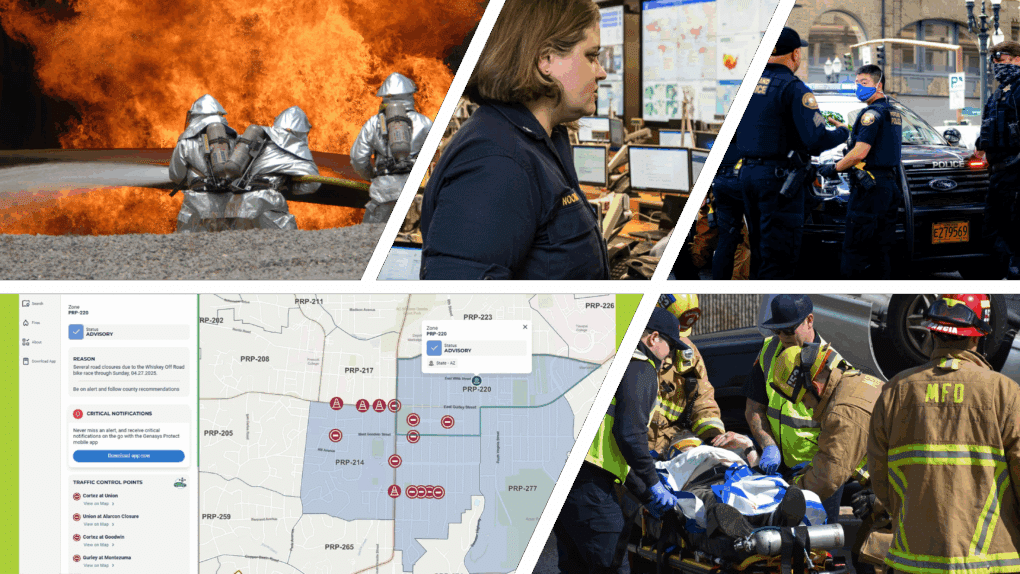By Tammi Canelli, Director of Onboarding, Genasys Inc.
5+ years as Emergency Management Officer
Once the wildfire or hurricane evacuation is under control and the all-clear is given, the post-event analysis begins. Every team involved takes the time to go back over the emergency to look for ways they can improve their performance for the next inevitable disaster.
Crucial for understanding and improvement, post-event analysis after wildfire, flooding, or other natural disaster emergency provides a vivid picture of how well your emergency response plan worked. It allows you to identify areas for improvement and refine your strategies for handling future emergencies.
Technology to Enhance the Post-Event Analysis
Optimizing your team’s performance is one of the best ways to plan and train for the next event. Unexpected problems always arise during any situation and the after-action report is an excellent way to strategize ways to be prepared in the future. This is especially helpful as natural disasters, such as wildfires, tornadoes, hurricanes, and floods, are taking on new and more deadly characteristics, such as speed, strength, and sheer destructive power.
Here are some aspects to consider and technologies that can aid in post-event analysis:
- Communication and Notification Systems – Evaluate the effectiveness of your communication systems during an emergency. Use tools like mass notification systems to analyze message delivery rates, response times, and any issues that arose.
- GIS and Mapping Tools – Geographic Information Systems (GIS) can help analyze the spatial aspects of an emergency response. Tools can help visualize the emergency’s impact, evacuation routes, and resource allocation.
- Emergency Management Software – Available platforms offer specialized tools for managing emergency response operations. They can help track resources, tasks, and communications during emergencies and provide data for analysis afterward.
- Social Media Monitoring – Monitor social media platforms using tools like Hootsuite or Brandwatch to gauge public sentiment, identify emerging issues, and assess the effectiveness of your communication strategies during the emergency.
- Simulation and Modeling Software – Use simulation software to recreate the emergency scenario and test different response strategies virtually. This can help evaluate the effectiveness of different approaches and identify potential bottlenecks.
- Incident Reporting Systems – Implement tools that allow responders and affected individuals to submit incident reports and feedback. This data can provide insights into the emergency’s impact and areas that need improvement.
- After-Action Reports (AARs) – Use software or templates to create structured after-action reports that document the details of the emergency, the response actions taken, and the outcomes. These reports help in identifying strengths and weaknesses.
Improving Post-Event Response Strategies
The goal of post-event analysis is to continuously improve your response strategies and enhance preparedness for future incidents. The combination of technology, data analysis, and stakeholder collaboration plays a significant role in achieving this goal.
Creating a comprehensive AAR is essential for capturing the details of an emergency event and response efforts. An AAR helps to identify strengths, weaknesses, lessons learned, and areas for improvement. Once released to the public, an AAR can enhance community awareness and support by demonstrating the thoughtful and proactive approach to safeguarding citizens.
As an example, Nick Baldrige, Lieutenant with the Santa Cruz County Sheriff’s Office, stated that during a flood their responders had over evacuated several areas. But after implementing EVAC evacuation management software, these responders were able to use zone-splitting features to avoid over-evacuation during a subsequent flood the following January.
Taking AARs to the Next Level
Most post-event reports created by mass notification solutions look at how many messages went out, which channels were used, who received messaging and who did not, etc. This information is very useful, but post-event analysis can go much further by presenting a dynamically accurate picture. Advanced technology, such as wildfire simulation, evacuation modeling, traffic monitoring, etc., can provide a lot more insights.
Wildfire simulation, evacuation modeling, and traffic monitoring weave together a very accessible format that’s easy to understand and can lead to insights such as those mentioned above. Other insights can be visualized with ease such as which roads are most problematic when evacuation is required, and whether resources were deployed effectively to address important issues.
Additionally, seeing how evacuations unfold can also provide insights into the effectiveness of pre-planning and communications. Did residents respond the way emergency managers intended? Did everyone evacuate as intended? Was it harder to reach certain areas with information due to coverage, power outages, or impacted infrastructure?
A Final Word
In an era where every second counts, post-event analysis technology is revolutionizing the way first responders, law enforcement, and fire departments assess and adapt to crises. By turning raw data into actionable insights, these advanced solutions empower agencies to refine their strategies, enhance training, and improve community outcomes.
As the challenges of modern emergency response continue to evolve, embracing these innovations is not just an advantage—it’s a necessity. Together, we can build safer, more resilient communities, armed with the tools to respond better and learn smarter from every event.
Contact Genasys to learn more about advanced post-event opportunities for review and improvement so that your department is ‘ready when it matters.’

















